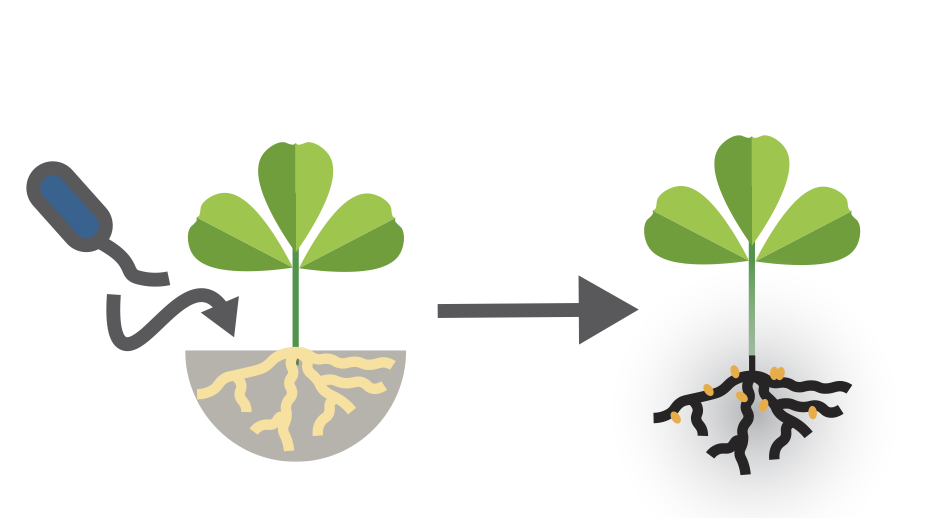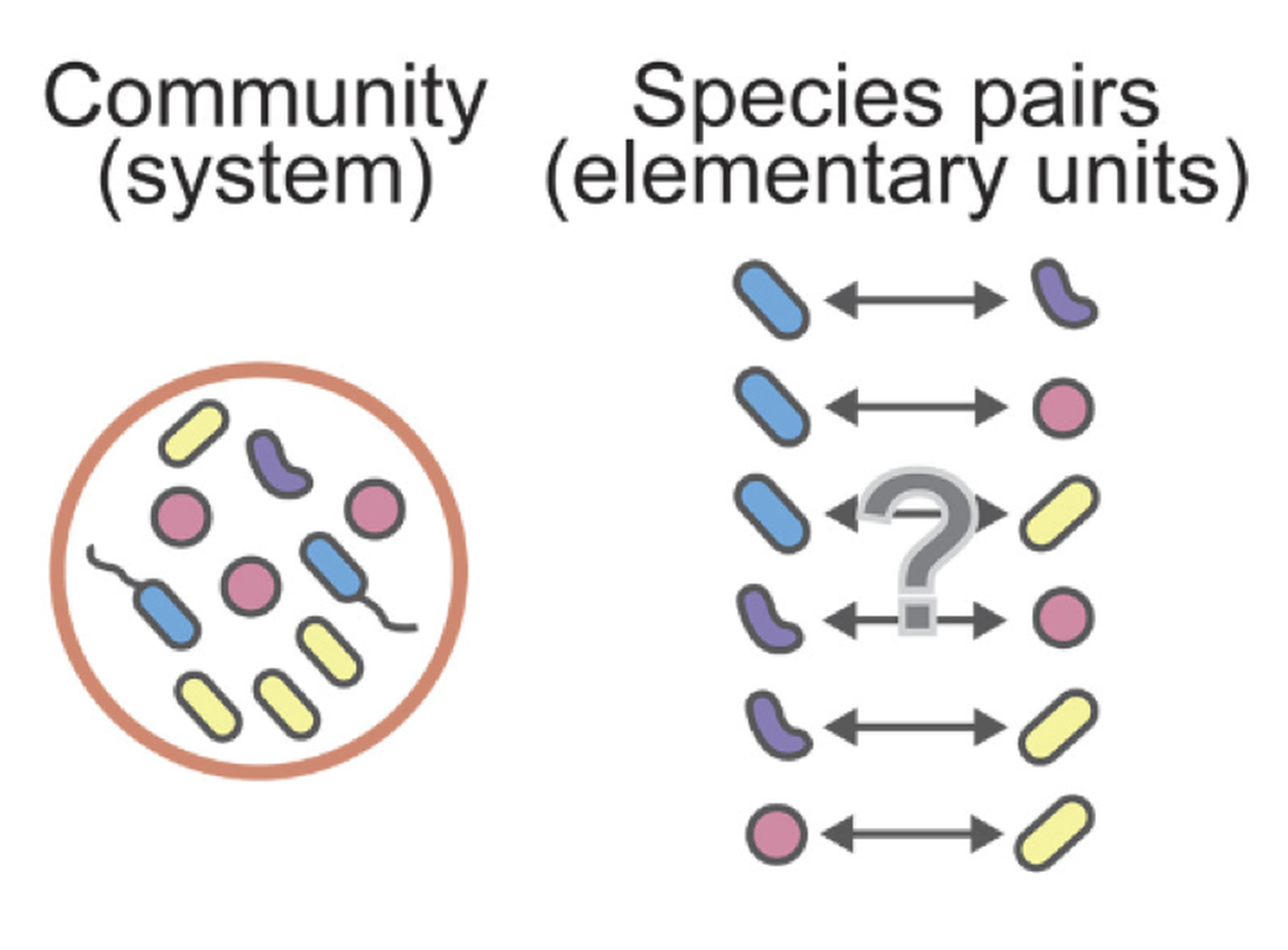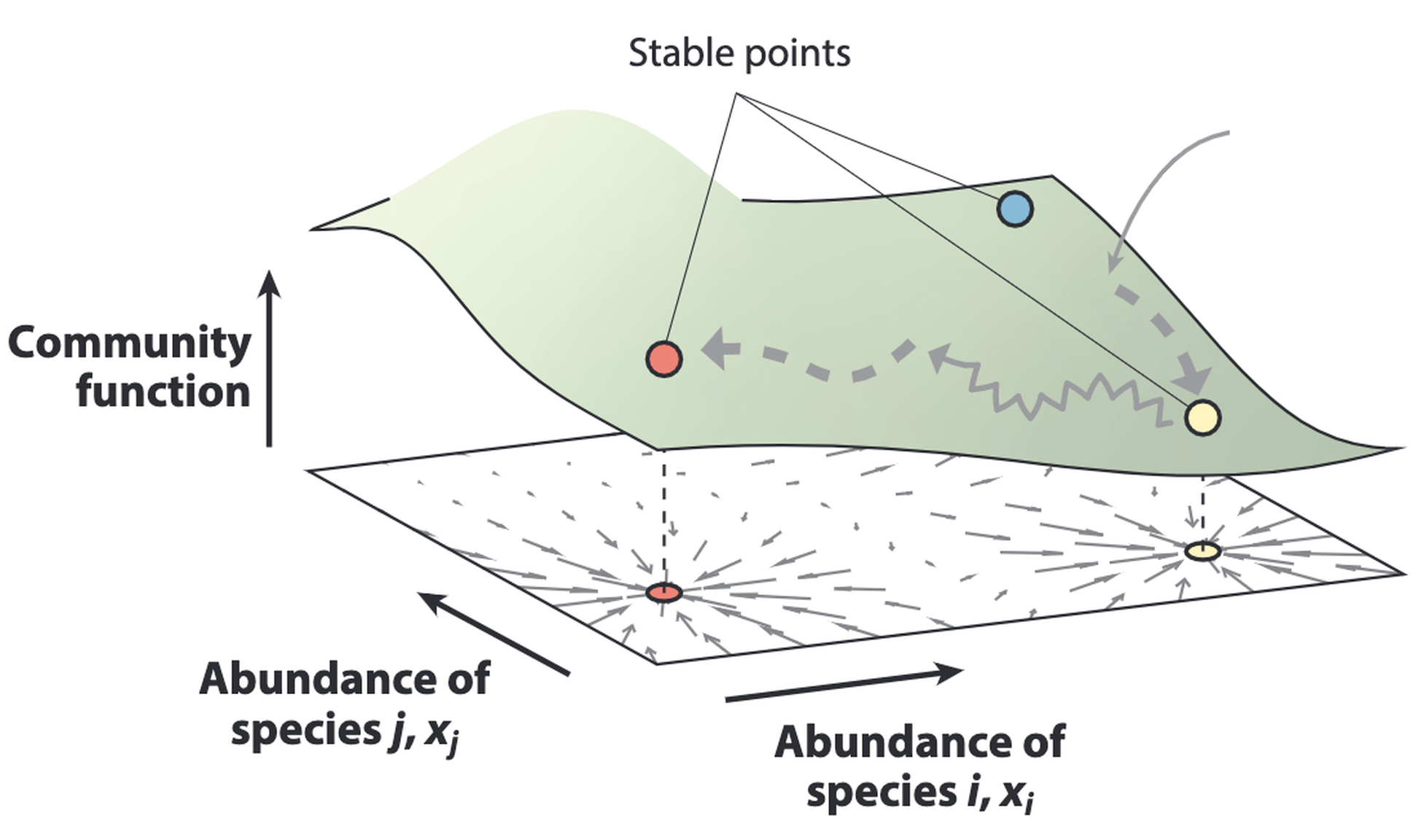Evolution of Host–Microbe Symbiosis

How does the free-living stage shape the evolution of facultative symbionts that regularly associate with hosts?
Adaptation during the free-living stage leaves distinct biogeographic and genomic signatures in facultative symbiotic microbes associated with a widely distributed host.
Population genomics, growth assays, phylogenetic comparative methods.
Facultative symbiosis, mutualism, rhizobia.
Facultative symbionts alternate between host-associated and free-living stages. We study how environmental adaptation outside the host drives genomic divergence and population structure, providing new insights into the evolution of microbial symbiosis.
Emergent Coexistence & Community Assembly

Why do diverse microbial consortia coexist, and can such coexistence be explained by simple pairwise priniciples?
Coexistence arises as an emergent property of microbial communities— systems that remain stable even when their constituent pairs cannot.
Synthetic communities, competitive assays, machine-learning–based image analysis.
Community ecology, microbial ecology, complex system.
We combine experiments and theory to explore how stability emerges from complex microbial interactions. Our results reveal that coexistence is not reducible to pairwise outcomes but is an emergent, collective feature of multispecies communities.
Microbiome Engineering & Artificial Selection

How can microbial communities be evolved or engineered as functional units through artificial selection?
Community-level functions can improve across selection cycles when heritable variation is maintained or replenished.
Experimental evolution, metabolic assays, computational modeling.
Microbiome engineering, artificial selection, directed evolution.
Chang et al. 2020 · Chang et al. 2021
We treat microbial consortia as evolving entities, subject to artificial selection on desired community traits. By combining experimental evolution and modeling, we develop frameworks for optimizing microbiome function and stability.